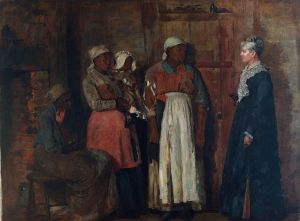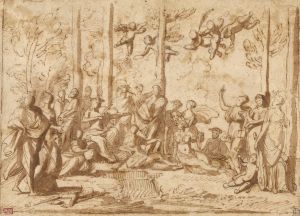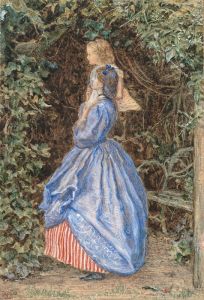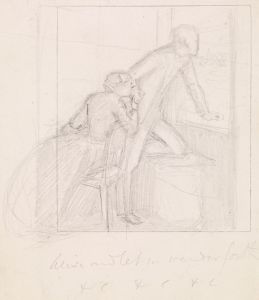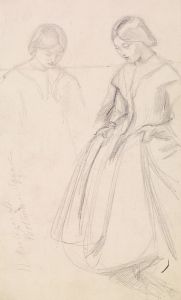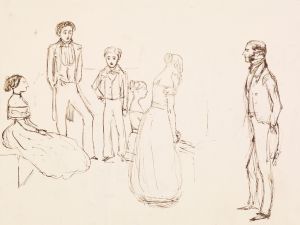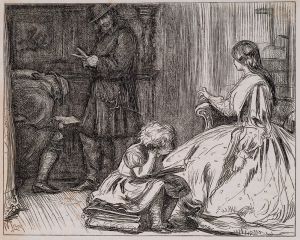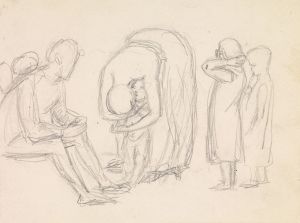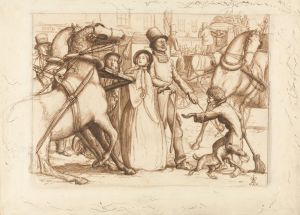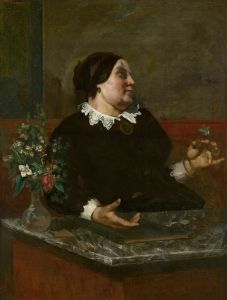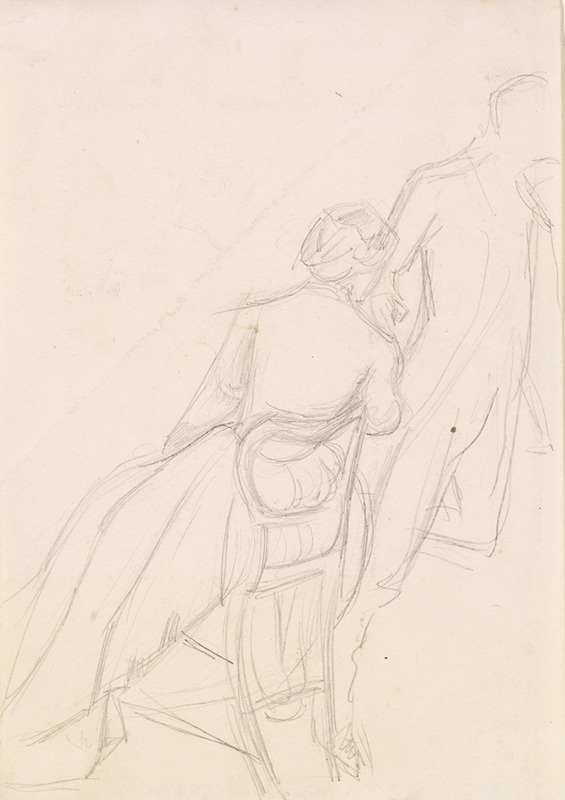
Tennyson’s The Miller’s Daughter – Study for Husband and Wife in Arise and Let us Wander Forth
A hand-painted replica of Sir John Everett Millais’s masterpiece Tennyson’s The Miller’s Daughter – Study for Husband and Wife in Arise and Let us Wander Forth, meticulously crafted by professional artists to capture the true essence of the original. Each piece is created with museum-quality canvas and rare mineral pigments, carefully painted by experienced artists with delicate brushstrokes and rich, layered colors to perfectly recreate the texture of the original artwork. Unlike machine-printed reproductions, this hand-painted version brings the painting to life, infused with the artist’s emotions and skill in every stroke. Whether for personal collection or home decoration, it instantly elevates the artistic atmosphere of any space.
"Tennyson’s The Miller’s Daughter – Study for Husband and Wife in Arise and Let us Wander Forth" is a painting by Sir John Everett Millais, a prominent English painter and illustrator who was one of the founders of the Pre-Raphaelite Brotherhood. This artwork is a study for a larger piece inspired by Alfred, Lord Tennyson's poem "The Miller's Daughter."
John Everett Millais was born in Southampton, England, in 1829 and showed an early talent for art. He entered the Royal Academy Schools at the age of 11, the youngest student ever admitted. Millais, along with Dante Gabriel Rossetti and William Holman Hunt, founded the Pre-Raphaelite Brotherhood in 1848. This group sought to return to the detail, intense colors, and complex compositions of Quattrocento Italian art, rejecting the academic standards of their time.
The painting in question, "Tennyson’s The Miller’s Daughter – Study for Husband and Wife in Arise and Let us Wander Forth," is a preparatory work for a larger composition. It depicts a scene from Tennyson's poem "The Miller's Daughter," which tells the story of a miller’s daughter and her romantic relationship with a nobleman. The poem is part of Tennyson's 1832 collection and was later revised in 1842.
In the study, Millais captures the tender moment between the husband and wife as they prepare to wander forth, reflecting the romantic and idyllic themes of Tennyson's poetry. The Pre-Raphaelite Brotherhood often drew inspiration from literature, particularly works that emphasized beauty, nature, and emotion, which is evident in this piece.
Millais's technique in this study showcases his meticulous attention to detail and his skill in rendering human expressions and natural settings. The use of light and shadow, as well as the careful composition, highlights the intimate connection between the figures. This study would have served as a preliminary exploration of the themes, composition, and emotional tone that Millais intended to capture in the final work.
Throughout his career, Millais produced numerous works inspired by literary sources, and his illustrations for Tennyson's poems are among his most celebrated contributions to Victorian art. His ability to translate poetic imagery into visual form helped to popularize Tennyson's work and cemented Millais's reputation as a leading artist of his time.
The final painting, for which this study was a preparatory work, would have been part of a larger series or collection, demonstrating Millais's dedication to thoroughly exploring his subjects before committing them to their final form. This approach was typical of the Pre-Raphaelite Brotherhood, who valued detailed preparatory studies as part of their artistic process.
In summary, "Tennyson’s The Miller’s Daughter – Study for Husband and Wife in Arise and Let us Wander Forth" by Sir John Everett Millais is a significant example of the artist's engagement with literary themes and his meticulous preparatory work. It reflects the ideals of the Pre-Raphaelite Brotherhood and Millais's skill in capturing the emotional depth of his subjects.








